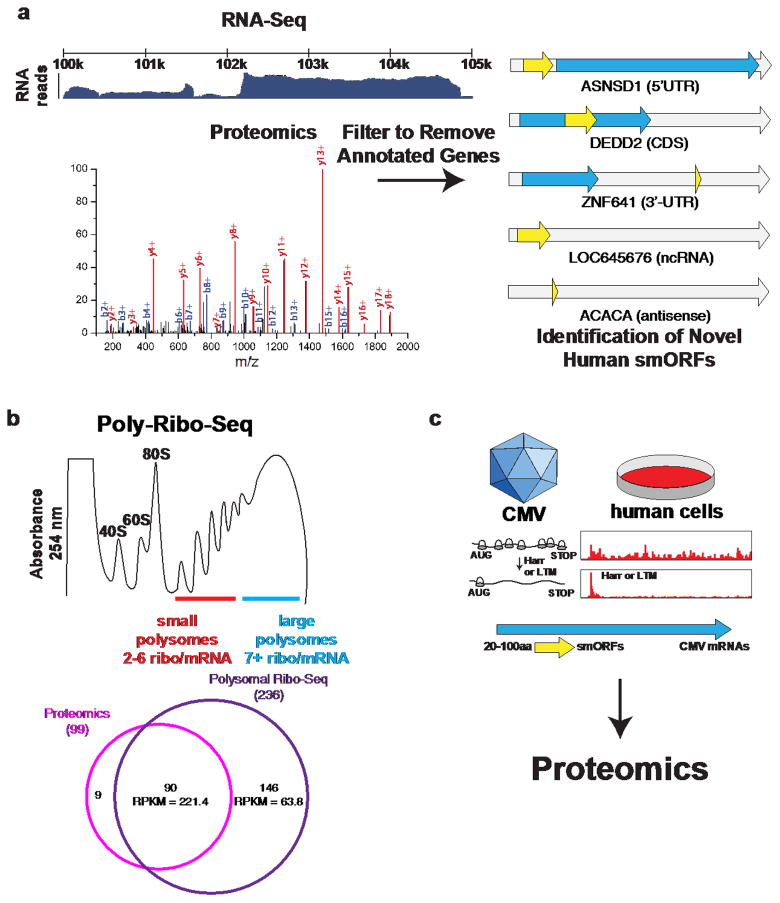Figure 1. Overview of smORFs and SEPs.
a) Ribosomal translation of smORFs produces bioactive SEPs (left) while classical peptide and small protein hormones are produced from limited proteolysis of a much longer prohormone gene (right). b) SEPs partake in protein-protein interactions with a variety of different proteins, such as ion channels, transporters, and other complexes (left). Classical polypeptide hormones, on the other hand, are secreted and primarily interact with two receptor classes g protein-coupled receptors (GPCRs) and receptor tyrosine kinases (RTKs). c) uORFs regulate downstream ORF translation by different mechanisms including stalling or enhancing dissociation of the ribosome. Removal of the uORF leads increased translation of downstream ORFs. Not all uORFs are smORFs (i.e. protein-coding) but in some cases the sequence of protein-coding uORFs are important in regulating downstream ORF translation.

